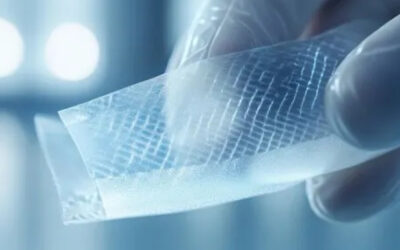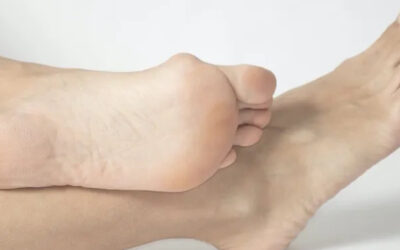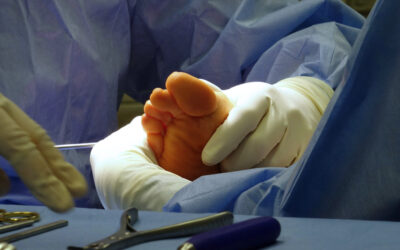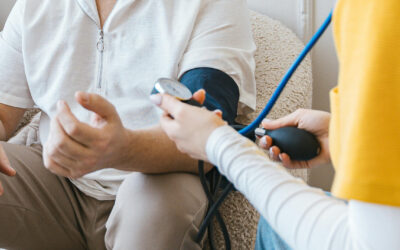Wound healing is a complex process that plays a critical role in restoring the skin and tissues after an injury. Whether it’s a minor cut, a chronic wound, or a surgical incision, understanding the stages of wound healing can help patients better manage their expectations and participate in their recovery. At Capital Foot Care, our team of experienced podiatrists—Dr. Muhammad A. Khalid, Dr. Fritz-Andre Duterlein, and Dr. Herman Zarate—is dedicated to providing advanced wound care to ensure fast and effective healing. In this blog post, we’ll walk you through the wound healing journey and what you can expect during each stage of the process.
The Stages of Wound Healing
Wound healing occurs in a series of four overlapping phases, each essential to the body’s ability to repair itself. Here’s a breakdown of each stage:

- Hemostasis (Clotting Phase)
The first stage of wound healing begins immediately after an injury occurs. Hemostasis is the process in which the body stops the bleeding by forming a clot. Blood platelets gather at the site of the wound, and clotting factors activate to form a protective barrier, known as a scab, over the wound. This scab prevents further bleeding and acts as a protective covering against infection.
What to Expect: During this phase, you may notice swelling, redness, and some warmth around the wound as blood vessels constrict to reduce blood loss. It’s important to keep the wound clean to prevent infection.
- Inflammatory Phase
Once the clot forms, the inflammatory phase kicks in. During this phase, white blood cells rush to the wound site to fight off any bacteria or debris. The body also releases growth factors that promote healing. This phase typically lasts for a few days and is characterized by visible signs of inflammation.
What to Expect: You may experience increased redness, swelling, and tenderness around the wound. It’s normal for the area to feel warm, and some drainage is common. However, if there is excessive pain or a foul odor, this could indicate an infection and should be evaluated by a healthcare professional.

- Proliferative Phase (Tissue Regeneration)
The proliferative phase is when the body starts to rebuild the tissue. During this stage, the wound begins to fill with new tissue, including collagen and blood vessels, which are essential for wound closure. The edges of the wound start to contract, and new skin forms over the wound site. Depending on the severity of the wound, this phase can last several days to a few weeks.
What to Expect: You’ll notice that the wound becomes smaller as new tissue forms and the skin begins to cover the wound. Keep the wound protected and moist with appropriate dressings to promote healing and prevent scarring.
- Maturation (Remodeling Phase)
The final stage of wound healing, known as the maturation phase, can last for months or even years, depending on the size and depth of the wound. During this phase, collagen is reorganized to strengthen the new tissue. Although the wound may appear to be fully healed on the outside, this phase is crucial for rebuilding the strength and flexibility of the skin and tissues.
What to Expect: The skin around the wound may feel tight, and you may notice a slight discoloration or scarring. Over time, the wound will continue to heal, and the appearance of scars will fade. Using scar-reducing creams and protecting the wound from sunlight can improve cosmetic outcomes.
When to Seek Professional Wound Care
While most minor wounds can heal with basic first aid, certain wounds require specialized care to ensure proper healing and avoid complications. Here are a few signs that indicate you should seek professional wound care:
- The wound is large, deep, or won’t stop bleeding.
- You notice signs of infection, such as increased redness, pus, or a foul odor.
- The wound doesn’t show signs of healing within a reasonable timeframe.
- You have underlying conditions, such as diabetes or poor circulation, that affect wound healing.

At Capital Foot Care, we specialize in treating both acute and chronic wounds, particularly in patients with diabetes and other conditions that impede normal healing. Our doctors provide individualized treatment plans to promote faster healing and prevent complications.
Advanced Wound Care Techniques
At Capital Foot Care, we offer advanced wound care techniques to aid in faster recovery, including:
- Debridement: The removal of dead or infected tissue to promote healthy tissue growth.
- Negative Pressure Wound Therapy: A technique that uses suction to remove excess fluid and promote blood flow to the wound.
- Advanced Dressings: Specialized dressings that maintain an optimal environment for healing.
- Hyperbaric Oxygen Therapy (HBOT): A treatment that involves breathing oxygen in a pressurized chamber to enhance the body’s natural healing processes.

Why Choose Capital Foot Care?
At Capital Foot Care, our experienced team of podiatrists—Dr. Muhammad A. Khalid, Dr. Fritz-Andre Duterlein, and Dr. Herman Zarate—is dedicated to providing comprehensive wound care solutions. With the latest technologies and treatment options, we ensure that each patient receives personalized care to promote efficient wound healing.
For more information or to schedule a consultation, contact us at 301-927-FOOT (3668) or email us at [email protected]. We are conveniently located at:
- 6510 Kenilworth Ave. Suite 2300 Riverdale, MD 20737
- 7610 Carroll Ave. Suite 380 Takoma Park, MD 20912
- 8816 Jericho City Drive Largo, MD 20785
- 2041 Martin Luther King Jr Ave SE, Suite 103, Washington, DC 20020
- 1328 Southern Ave SE, Suite 209 Washington, DC 20032

Understanding the stages of wound healing can help you navigate your recovery journey with greater confidence. While most wounds heal without complications, it’s important to seek professional care when necessary to ensure proper healing. At Capital Foot Care, we are committed to helping our patients heal quickly and effectively with advanced wound care solutions.










